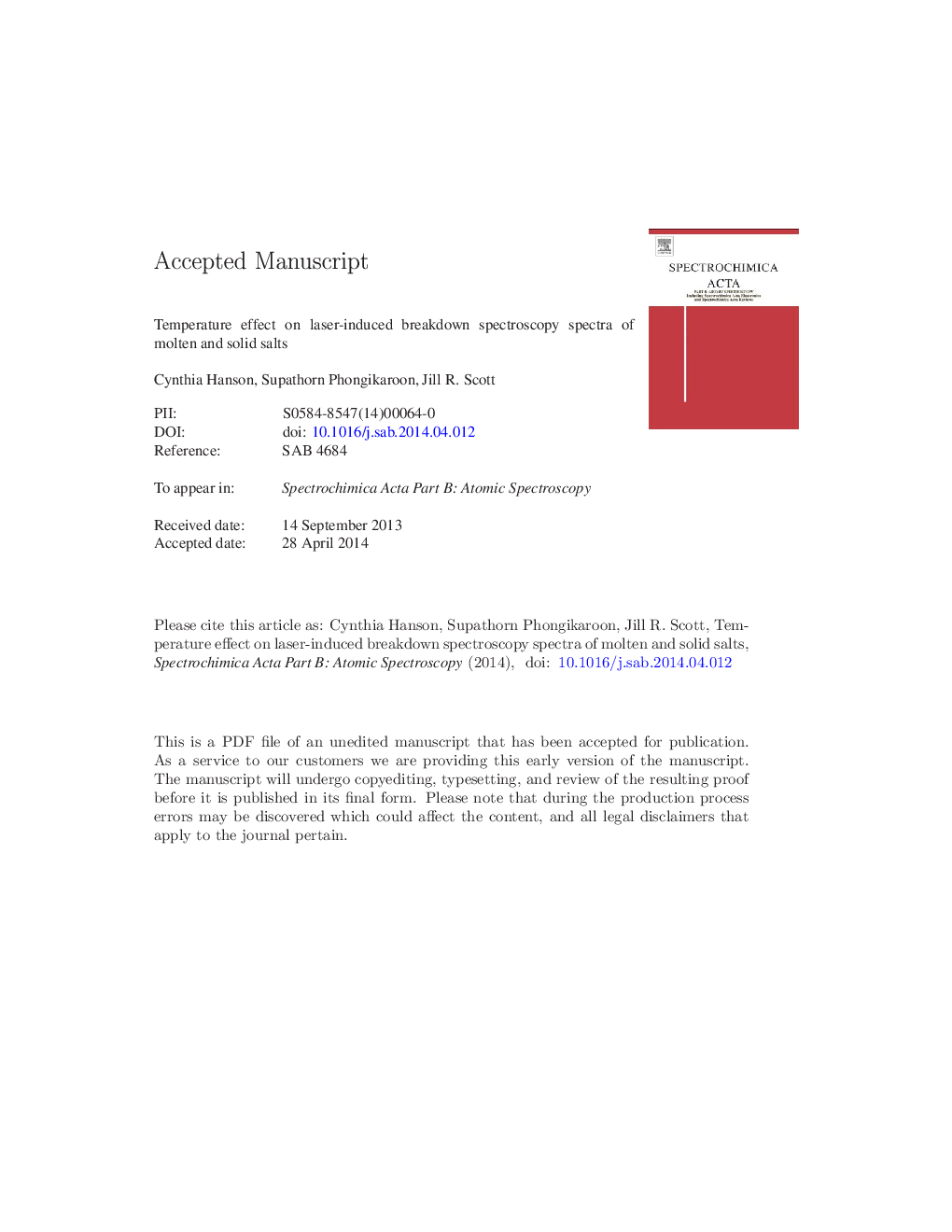| Article ID | Journal | Published Year | Pages | File Type |
|---|---|---|---|---|
| 7674749 | Spectrochimica Acta Part B: Atomic Spectroscopy | 2014 | 34 Pages |
Abstract
Laser-induced breakdown spectroscopy (LIBS) has been investigated as a potential analytical tool to improve operations and safeguards for electrorefiners, such as those used in processing spent nuclear fuel. This study set out to better understand the effect of sample temperature and physical state on LIBS spectra of molten and solid salts by building calibration curves of cerium and assessing self-absorption, plasma temperature, electron density, and local thermal equilibrium (LTE). Samples were composed of a LiCl-KCl eutectic salt, an internal standard of MnCl2, and varying concentrations of CeCl3 (0.1, 0.3, 0.5, 0.8, and 1.0Â wt.% Ce) under different temperatures (773, 723, 673, 623, and 573Â K). Analysis of salts in their molten form is preferred as plasma plumes from molten samples experienced less self-absorption, less variability in plasma temperature, and higher clearance of the minimum electron density required for local thermal equilibrium. These differences are attributed to plasma dynamics as a result of phase changes. Spectral reproducibility was also better in the molten state due to sample homogeneity.
Related Topics
Physical Sciences and Engineering
Chemistry
Analytical Chemistry
Authors
Cynthia Hanson, Supathorn Phongikaroon, Jill R. Scott,
